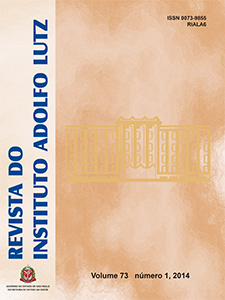High sodium contents in processed foods consumed by Brazilian population
Keywords:
sodium, processed foods, inductively coupled plasma atomic emission spectrometry (ICP OES)
Abstract
Sodium is an essential compound for regulating the intracellular and extracellular mineral fluids, and for maintaining the blood pressure. An inadequate diet with ingestion of large quantities of salt may cause the chronic non-communicable diseases (NCDs) such as hypertension, cardiovascular diseases, cerebrovascular accidents, among others; thus, decreasing the intake of this mineral can reduce the risk factors of such diseases. The present study aimed at determining the sodium contents in some processed foods consumed by the Brazilian population: corn-based snacks, biscuit, hamburger, sausage and noodles, by means of inductively coupled plasma atomic emission spectrometry technique (ICP OES). The high sodium contents detected in these products revealed the importance of implementation and maintenance of food monitoring programs in the country. These strategies will provide tools to assist the food producers for controlling the sodium addition in processed products. Also, these actions will yield data which will be useful for the competent authorities to establish a legal provision which limits the amount of sodium added into the processed food, to ensure the offering of healthy foods to the population, in order to promote satisfactory public health.
Published
2015-10-01
How to Cite
Buzzo, M. L., Carvalho, M. de F. H., Arakaki, E. E. K., Matsuzaki, R., Granato, D., & Kira, C. S. (2015). High sodium contents in processed foods consumed by Brazilian population. Revista Do Instituto Adolfo Lutz, 73(1), 32-39. https://doi.org/10.18241/0073-98552014731587
Issue
Section
ORIGINAL ARTICLE










